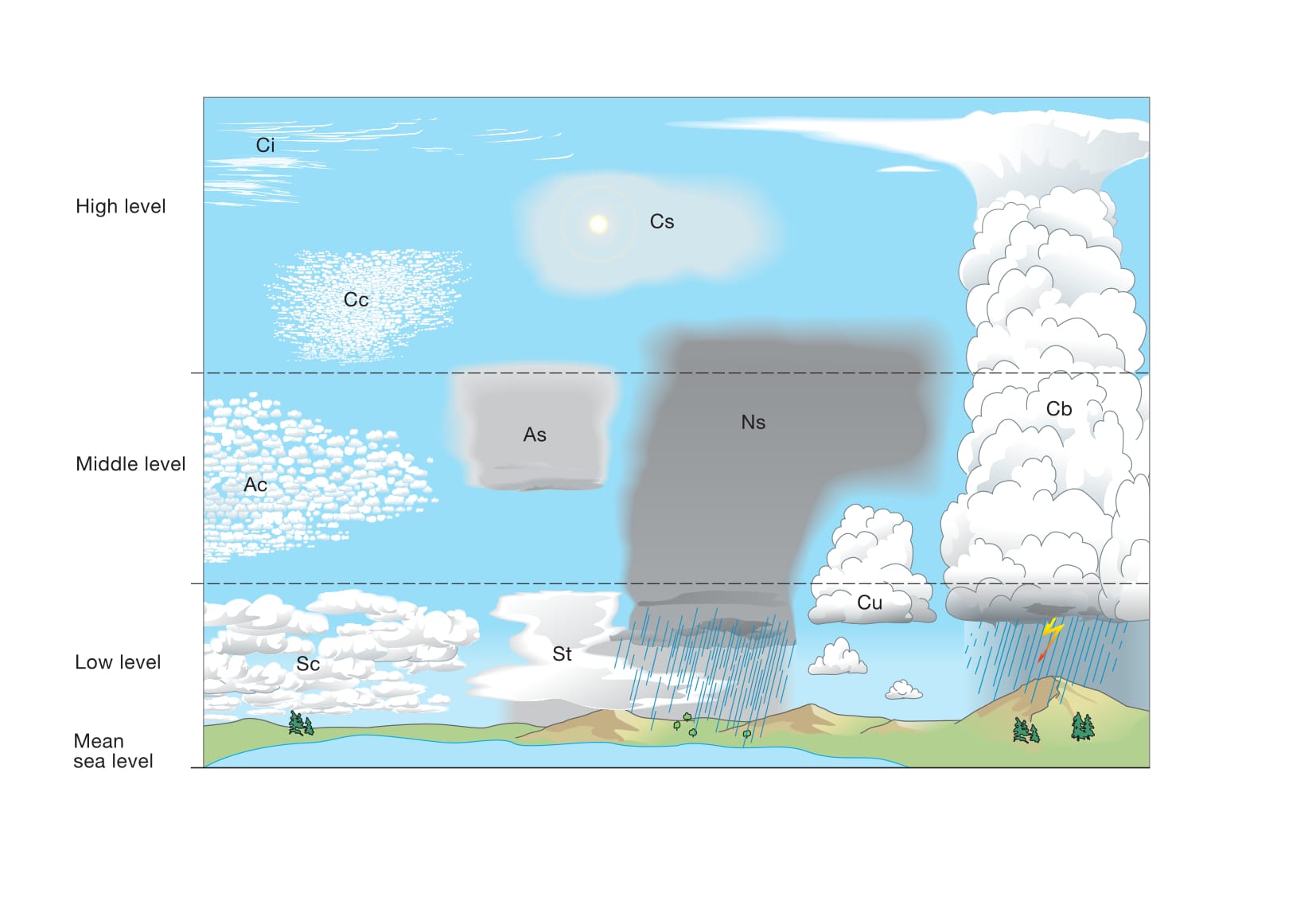Definitions of clouds
(Section 2.2)Useful concepts
(Section 2.2.1)Height, altitude, vertical extent
- Height: Vertical distance from the point of observation on the Earth’s surface to the point being measured.
- Altitude: Vertical distance from mean sea level to the point being measured.
- Height/Altitude of cloud base: For surface observations, height of the cloud base above ground level; for aircraft observations, altitude of the cloud base above mean sea level.
- Vertical extent: Vertical distance from a cloud’s base to its top.
Levels
Clouds are generally encountered over a range of altitudes varying from sea level to the top of the troposphere (the tropopause). The troposphere can be vertically divided into three levels, formerly known as “étages”: high, middle and low. Each level is defined by the range of heights at which clouds of certain genera occur most frequently. The levels overlap and their limits vary with latitude (see table 6 and figure 1).
Table 6. Approximate heights of each level, and the genera occurring in each.
|
Level |
Genera |
Polar region |
Temperate region |
Tropical region |
|
High |
Cirrus |
3 – 8 km |
5 – 13 km |
6 –18 km |
|
Middle |
Altocumulus |
2 – 4km |
2 – 7 km |
2 – 8 km |
|
Low |
Stratus |
From the Earth’s surface to 2 km |
From the Earth’s surface to 2 km |
From the Earth’s surface to 2 km |
Most clouds are confined within their level with the following few notable exceptions:
(a) Altostratus is usually found in the middle level, but it often extends higher;
(b) Nimbostratus is almost always found in the middle level, but it usually extends into the other two levels;
(c) Cumulus and Cumulonimbus usually have their bases in the low level, but their vertical extent is often so great that their tops may reach into the middle and high levels.
When the height of a particular cloud is known, the concept of levels may be of some help to the observer in identifying the cloud. The genus can be determined by making a choice from among the genera normally encountered in the level corresponding to its height.

Figure 1: The 10 genera within their allocated level or levels



